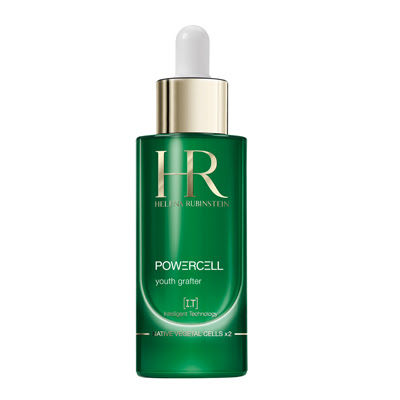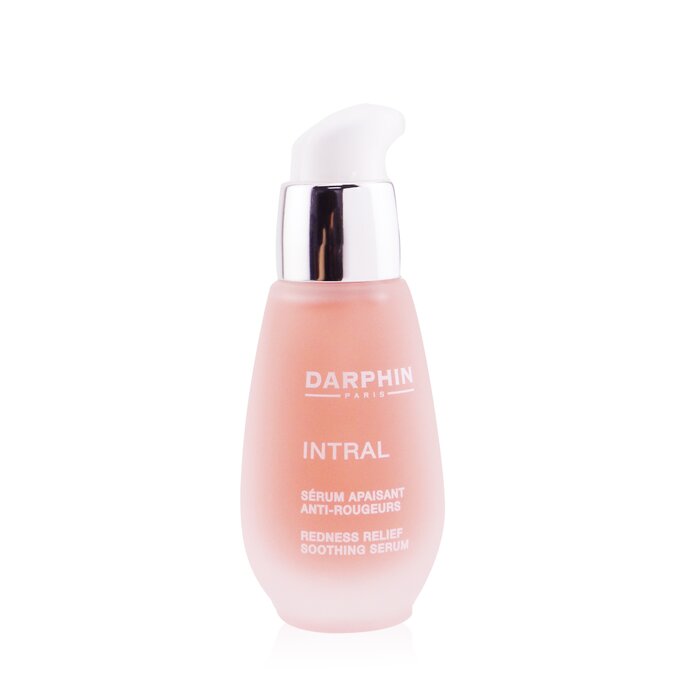A microbiome is defined as the entire collection of microorganisms living either inside or outside the human body. 1 After the U.S. National Institutes of Health carried out the Human Microbiome Project in 2012, Microbiome has been a hot topic in healthcare, skincare, and food.
After years of research and publicity, the role of the gut microbiome in health is now well established. However, information about microbes lurking on the skin is a relatively new but fast-growing trend in the medical and beauty industry. According to a report released by RESEARCHANDMARKET, the global skin microbiome modulators market was valued at $541.1 million in 2019 and is anticipated to grow over $2,971.6 million by 2030 with a CAGR of 16.7%. 2 Data from multiple institutes shows that the Chinese skin microbiome market will grow from 4.1 billion in 2019 to 10.54 billion yuan in 2025, with a CAGR of 26%, even higher than the global average CAGR. 3
How Does Skin Microbiome Work?
Human skin is home to millions of bacteria, fungi, and viruses that compose the skin microbiota. Similar to those in our gut, skin microorganisms have essential roles in the protection against invading pathogens, the education of our immune system, and the breakdown of natural products. As the largest organ of the human body, skin is colonized by beneficial microorganisms and serves as a physical barrier to prevent the invasion of pathogens. 4
The cosmetics industry is leveraging the skin microbiome concept from three perspectives:
Probiotics: Products with probiotics that are "good bacteria" to increase the number of favorable bacteria on the skin. 1
Prebiotics: Prebiotics are a type of fiber that the human body cannot digest. They serve as food for probiotics, stimulating their growth. 5
Postbiotics: Postbiotics refer to soluble factors (products or metabolic byproducts) secreted by live bacteria or released after bacterial lysis, such as enzymes, peptides, teichoic acids, peptidoglycan-derived muropeptides, polysaccharides, cell surface proteins, and organic acids.6 Experts believe that they can have a positive effect on skin health.
Based on these three perspectives, corresponding products have been researched and launched by ingredient companies from different countries.
Probiotics: The international fragrance giant Symrise has a product named SymriseSymReboot™ L19, a processed Lactobacillus that can soothe the skin and strengthen the skin barrier.
Prebiotics: PENTAVITIN®, an ingredient launched by DSM, is expected to improve the diversity of skin flora, solve scalp problems caused by microbial imbalance, and repair skin barriers.
Postbiotics: Repair Complex CLR PF™, released by CLR, are metabolites derived from Bifidobacterium. It can protect the skin and reduce photo-aging caused by ultraviolet rays.
How about Company Dynamics?
L’ Oreal
In 2019, L'Oréal released a "Skin Microbiome" research report, which announced its 15-year scientific research in this field, including 57 clinical researches in 12 subdivision areas including dandruff, aging, dry skin, sensitive skin, oily skin, and acne. It confirmedly believed that the era of skin microbiome was coming. In the same year, its high-end skincare brand Lancome released the second generation of Advanced Genifique Youth Activating Serum (Chinese nickname: Lancome Little Black Bottle 兰蔻小黑瓶). The product contains Bifidus Prebiotic, which claims it targets the key signs of aging in just seven days and can improve radiance, tone, elasticity, smoothness, and firmness. 7

Lancome Little Black Bottle
In fact, many skincare brands from L'Oreal, such as Helena, La Roche-Posay, Biotherm, etc., all have successfully applied skin microbiome to their products. La Roche-Posay’s product Effaclar Duo+ has a patent named APF, which can adjust the skin microbiome. Biotherm’s ace product Life Plankton Elixir (Chinese nickname: Biotherm Small Blue Bottle 碧欧泉小蓝瓶) has a primary ingredient, which is a fermentation product of Life Plankton Vitreoscilla, one kind of postbiotics. Helena’s most famous product Powercell Skinmunity Reinforcing Serum (Chinese nickname: Helena Green Aquarius 赫莲娜绿宝瓶) also contains postbiotics. The third generation of this product further adds some probiotics to adjust the skin microbiome and strengthen the skin barrier.

Helena Green Aquarius
Unilever
As a daily chemical giant, Unilever has been a pioneer in the skin and oral microbiome fields.
After researching for more than ten years, analyzing over 6000 microbial samples, conducting over 120,000 tests, and publishing more than 50 research essays, Unilever claims that it has found suitable prebiotics to be added to body cleansing products. Multiple products of Dove and Sunsilk use this ingredient.
In terms of oral care, Zendium, a brand from Unilever, launched a toothpaste applying oral microbiome technology. Active enzymes and protein systems are used to actively adjust the ratio of beneficial and harmful bacteria in mouth and stimulate the self-healing ability of the oral cavity to maintain oral microbial homeostasis.

ZENDIUM
Estee Lauder
Although Estee Lauder does not publicize this concept openly, it has also focused on this research field for a long time.
Its ace product Estee Lauder Advanced Night Repair (Chinese nickname: Estee Lauder Little Brown Bottle雅诗兰黛小棕瓶) uses the lysate of the fermentation product of Bifidobacterium as the main ingredient.
Darphin, another high-end brand from the Estee Lauder group, also has launched products using microbiome. Its ace product Redness Relief Soothing Serum (Chinese nickname: Darphin Little Pink Bottle 朵梵小粉瓶) has yeast extracts from Alternamonas + Lactobacillus, which can grow beneficial bacteria to stabilize the skin condition.

DARPHIN Little Pink Bottle
Origins, a plant skincare brand under the Estée Lauder Group, has a star product Mega-Mushroom Relief & Resilience Advanced Face Serum (Chinese nickname: Origins Mushroom Water 悦木之源菌菇水), which contain Ganoderma lucidum extract, Inonotus obliquus sclerotia extract and yeast extract, etc.. These ingredients are all postbiotics that can soothe skin.
Johnson & Johnson
Johnson & Johnson also has cooperated with other institutions to explore the application of the microbiome in medicine and cosmetics.
Last year, Johnson & Johnson invested in Dermala, a consumer dermatology company, to help the company develop personalized microbiota solutions for skin diseases, especially acne. As early as 2016, Johnson & Johnson started to cooperate with Dermala to invest in start-ups Xycrobe and S-Biomedic to research probiotic anti-acne products.
DR. ALVA
Chinese domestic brands such as Proya and Pechoin have launched new products in this field. There are also new rising skincare brands joined. Dr. ALVA is the representative.
Dr. ALVA is a brand from FREDA, a Chinese pharmaceutical company famous for hyaluronic acid production. FREDA started microbiome research in the food industry and later expanded to the skincare industry. Backed up by the high technology support from FREDA, Dr. ALVA gained much traction as soon as it entered the market in 2018. Focusing on the concept of the skin microbiome, this brand attracted consumers’ attention and achieved great sales in 2020: It sold a total of over 840,000 units of banana facial masks, over 430,000 units of essence, and over 350,000 units of probiotic toner and lotion. 3

Products from Dr. ALVA
What about Risks and Challenges?
Although the field is attracting more and more attention and investment, and numerous players are joining the competition, leveraging the skin microbiome concept is still in its incipient phase. Some major obstacles need to be overcome before it develops from a trend to a well-established vertical market. Here are the major stumbling blocks:
First, it requires time to educate consumers. 20 years ago, some personal brands such as Procter & Gamble emphasized the removal of 99.99% of the bacteria on the skin surface when promoting their products. These slogans have deeply influenced Chinese consumers’ understanding of microbes. Even today, Safeguard’s advertising slogans still focus on sterilization. A high percentage of people believe that the fewer microbes on the skin, the better. Therefore, it would be challenging to let consumers accept the concept of skin microbiome and even growing bacteria on the skin.
Second, standards and regulations in this field are still insufficient. Regulatory developments have understandably failed to keep pace with the rapid developments and commercialization of products in the sector. Different players use different terms to refer to the same principles or even the same terms to refer to different ingredients.
In China, the situation is even more nuanced. The primary regulation on the limits of microorganisms in products is Cosmetic Safety and Technical Standards (2015). It regulates the limitation of microbiological indicators in cosmetics as follows:
Microbiological indicator | Limit | Remark |
Total bacterial count (CFU/g or CFU/ml) | ≤500 | Eye-applicable cosmetics, lip care, and lip make-up and children's cosmetics |
≤1000 | Other cosmetics | |
Molds and yeast count (CFU/g or CFU/ml) | ≤100 | |
Fecal Coliforms/g (or ml) | Not Detected | |
Staphylococcus Aureus/g (or ml) | Not Detected | |
Pseudomonas Aeruginosa/g (or ml) | Not Detected |
Cosmetic Safety and Technical Standards (2015) places prohibitively strict limitations on products containing live probiotics in China. According to this regulation, the total bacterial count of most skin microbiome products exceeded the permitted limits. Therefore, most products in the Chinese market use prebiotics or postbiotics rather than probiotics. Most of prebiotics or postbiotics are listed in the Inventory of Existing Cosmetic Ingredients in China, so these products are compliant to the law. In terms of cosmetic claims, skin microbiome is currently not included in the list of prohibited claims, so in theory, the use of "skin microbiome" is not against regulations. However, since the implementation of the new regulations (CSAR), the government has continued to increase the supervision on cosmetics labeling and efficacy claims. Many emerging claims such as "stem cell," "CBD cosmetics" and "food-grade cosmetics" have been criticized by the National Medical Products Administration, thereby being banned later. In addition, some new concept claims may also be classified as "new efficacy," which needs to satisfy more complicated compliance requirements. Therefore, shareholders need to pay close attention to the update of laws and regulations and adjust business strategies as soon as policy changes occur.













